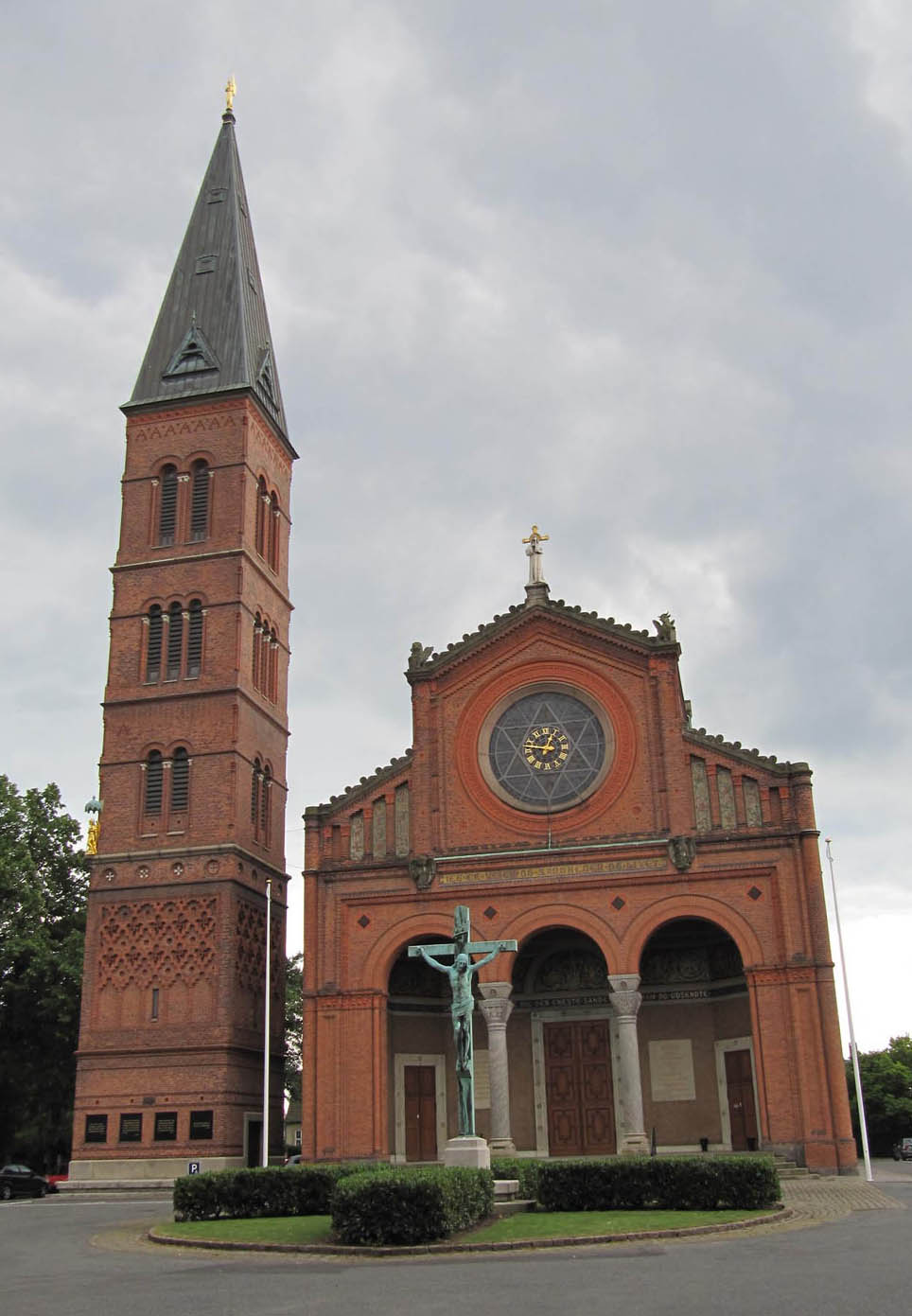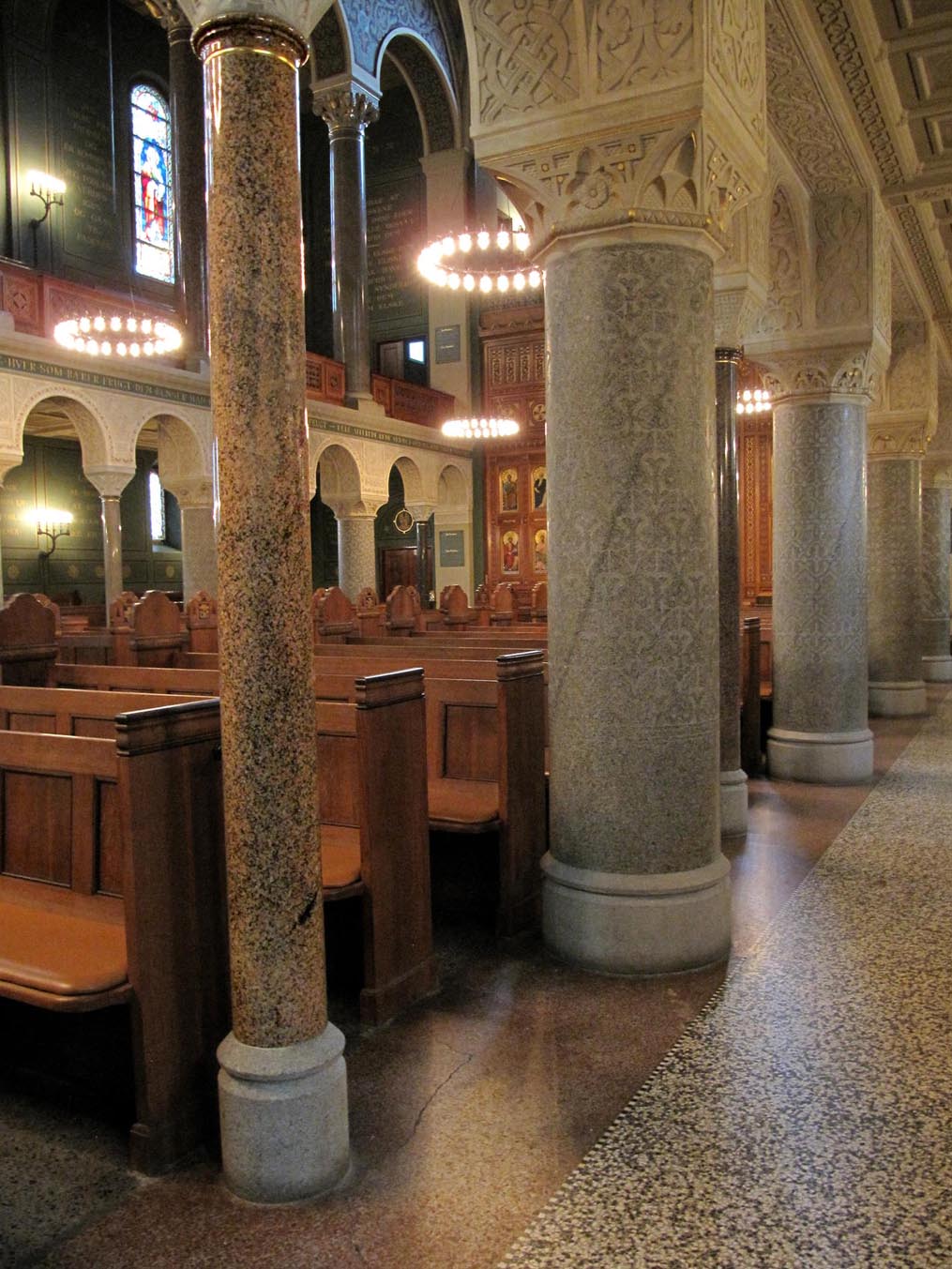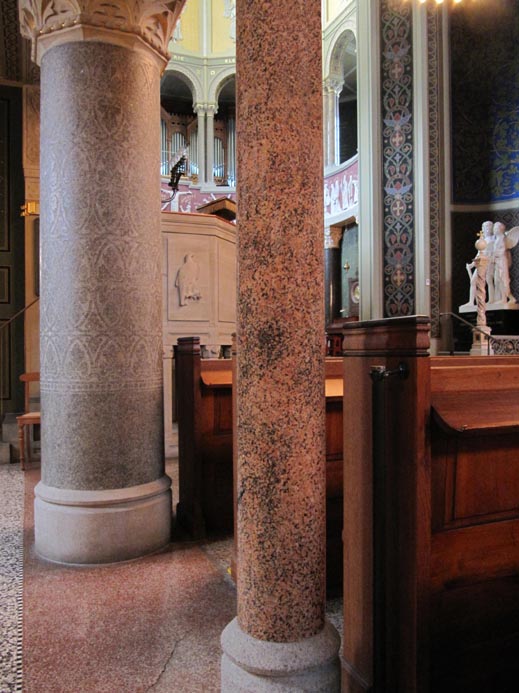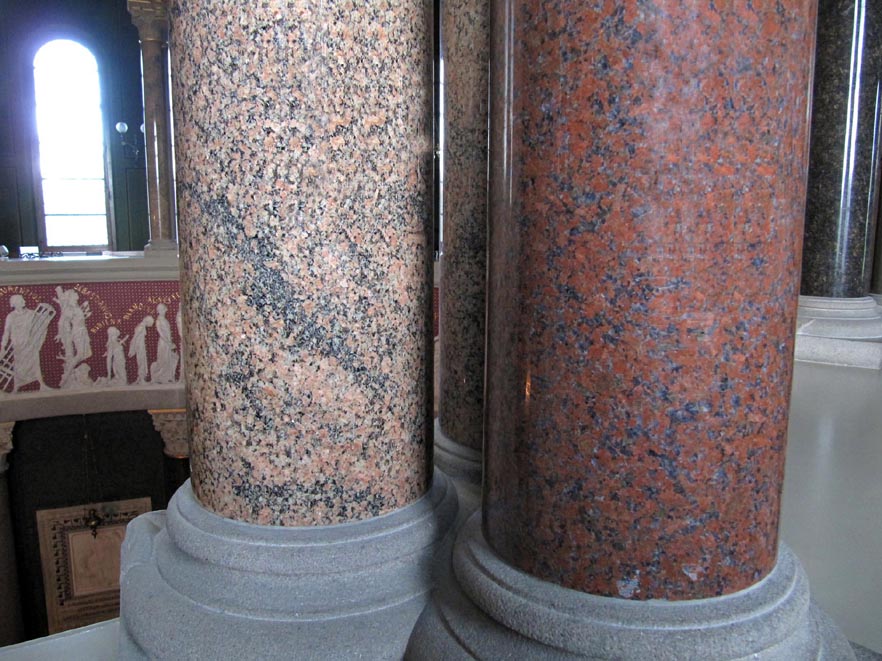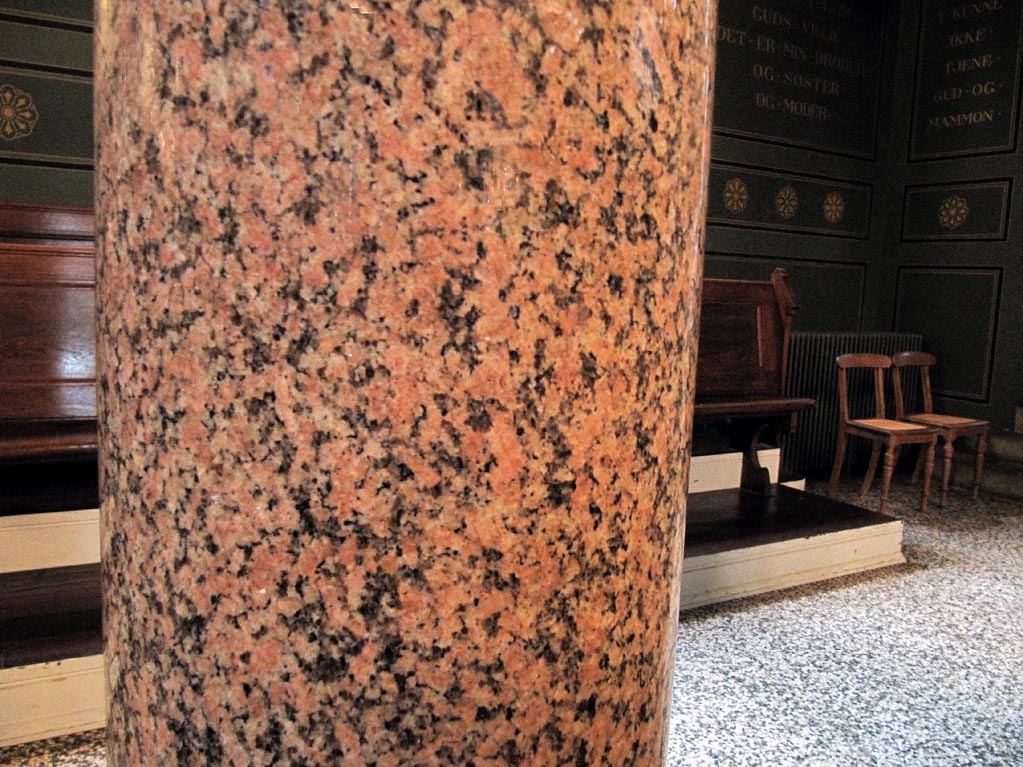|
|
|
|
|
|
|
Jesuskirken
in Copenhagen was inaugurated in 1891. |
The column to the left is of polished granite from Stångehuvud. |
|
In the Valby district in the western part of Copenhagen
the
unique Jesuskirken (Jesus Church) is situated. It was built in the late 1800s on behalf of the brewer Carl Jacobsen (1842-1914), owner of the Carlsberg brewery. The church is known for its many beautiful granite
columns of diverse kinds and has several burnished columns of granite
originating from Stångehuvud. Architect Vilhelm Dahlerup (1836-1907)
was commissioned in 1882 and planned a classical church with separate towers. Dahlerup
thus put his own artistic stamp on the church building design. |
Many
churches have the
cardinal points east-west with the altar facing east and the tower and the entrance
west. However, for Jesuskirken it was for reasons of space not possible to
build in that fashion. In order to make the beautiful facade as visible as possible
in the surrounding area, the church
was built south-north with the altar facing south and the entrance north. The church is 50 meters long and almost 18 meters wide. The tower has a height of 52 meters.
|
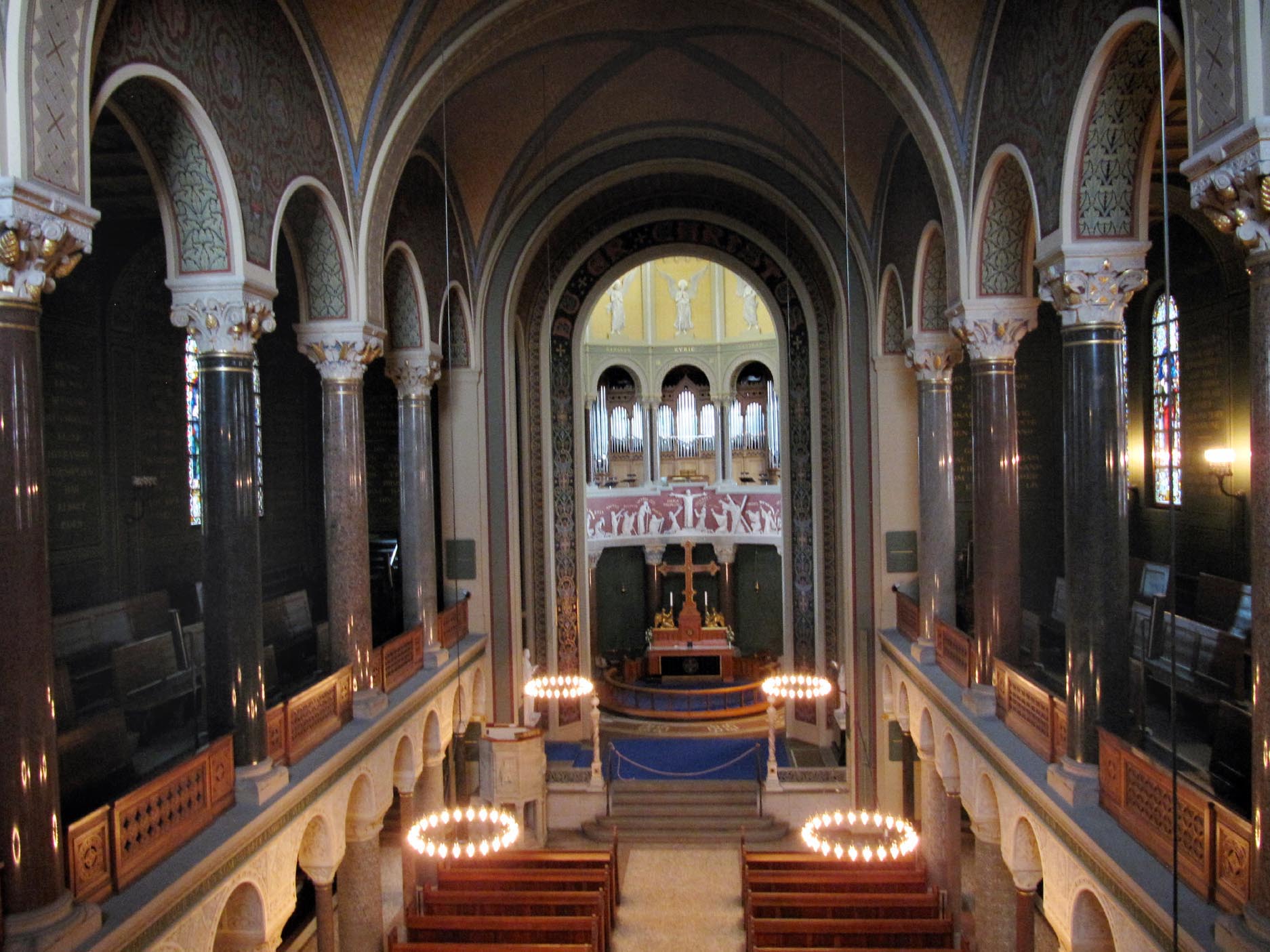 |
|
|
There
are 82 columns in the church. Most bearing columns are made of granite. Many of them are from Sweden and some of them from Bornholm. Many are highly polished and of varying
colours. Several of the widest columns have beautiful relief patterns.
|
|
|
|
|
|
The
column to fhe left is made of granite from Stångehuvud, whereas the
column to the right consists of granite from Graversfors with typical
bluish quartz. |
Column
of granite from Stångehuvud.
|
|
Several granite columns in Jesuskirken
are from Graversfors, located just over ten kilometres to the north of Norrköping in Östergötland.
Both red and black granite were produced in Graversfors. One type that is represented in Jesuskirken is
coarser and reddish granite with a typical bluish quartz. Graversfors-granite with bluish quartz
is also present in the Parliament House and the Governor´s House in Stockholm.
Read more about Jesuskirken (the homepage of Jesuskirken). To the 125 years of jubilee in 2016 a book about Jesuskirken has been written. It was presented in 15 November, at the day 125 years after the inauguration.
Pictures of Jesuskirken from June 2014. Thanks to priest Frank Bjørn Christensen and journalist Erik Udsen, Valby, Copenhagen, who showed the church and gave interesting information about it.
|
|
